Electric guitars are all about rocking out with their cool sounds and endless styles. And then there’s the acoustic guitar, so simple and filled with beautiful tunes.
Mix them together, and what do you get? The acoustic-electric guitar. If you’ve ever wondered how adding electric bits changes the sound of the good old acoustic, let me tell you, it’s like your regular acoustic but can go loud with a plug-in.
I’m going to explain in detail the key distinctions between acoustic guitars and acoustic-electric guitars. We’ll find out what unique skills they offer to our music-making table.
Acoustic Electric Vs Acoustic Guitar: What’s The Difference?
The main difference between an acoustic guitar and an acoustic-electric guitar is how they boost the sound, and they are also built differently.
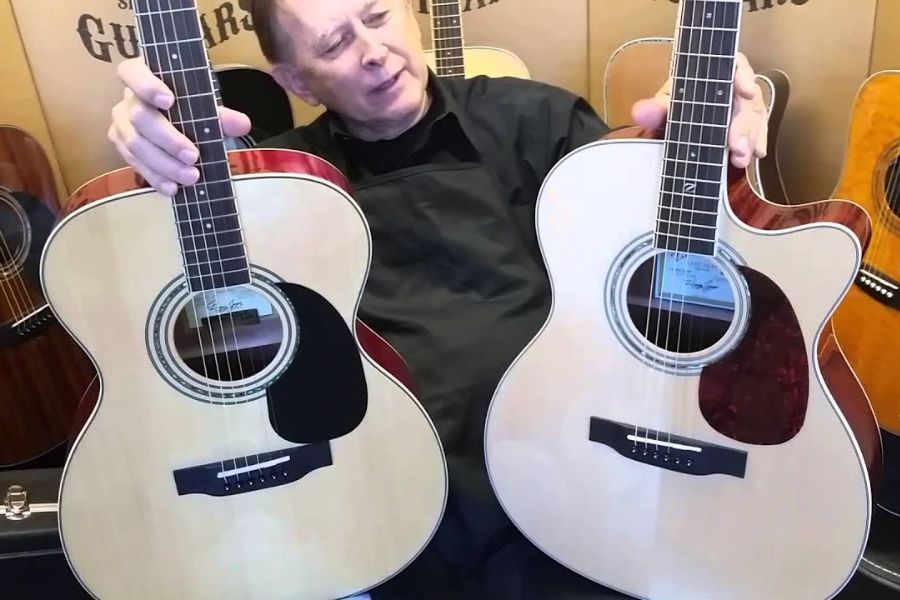
Sound Amplification
Acoustic Guitar
Acoustic guitar doesn’t have any electronics built-in. It relies solely on the resonance of its wooden body to project sound. For a warmer, more natural tone, and for unplugged playing and intimate settings.
The acoustic’s natural sound articulate all those campfire sing along, like the emotional ballad, or the mellow fingerpicking melodies.
It’s a truly portable instrument. You don’t need any additional equipment to enjoy its sound, ideal for casual playing, songwriting, and impromptu jam sessions.
Acoustic-Electric Guitar
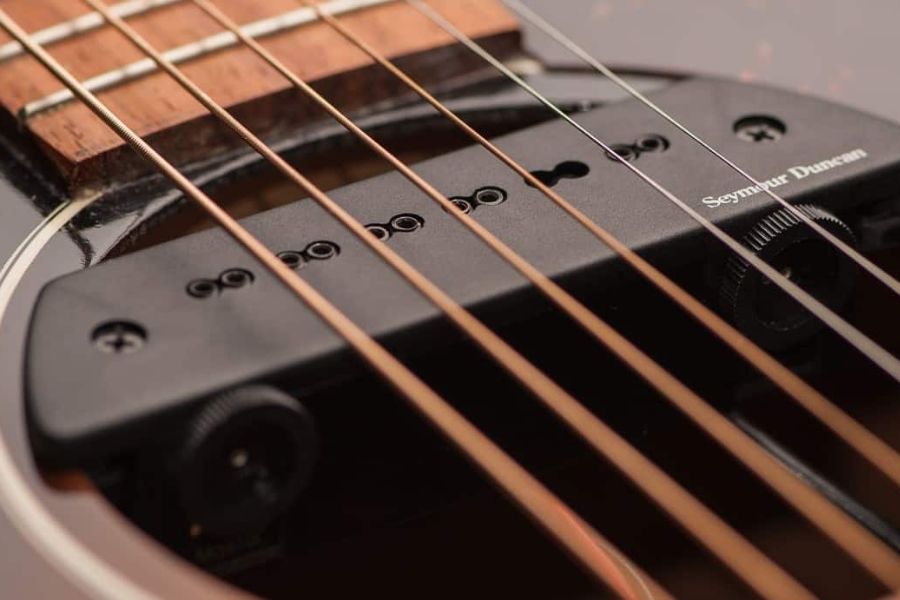
An acoustic electric guitar is actually an acoustic guitar with added electronics. Know how different can an acoustic guitar from the electric guitar can help you in this concept. The acoustic guitar can be played unplugged for the classic acoustic sound or plugged into an amplifier for a louder sound.
These include a pickup (magnetic or piezoelectric) that captures the vibrations of the strings and converts them into an electrical signal.
An external amplifier or PA system will amplify this signal, and with built-in volume and tone controls. Often, you can play louder and alter the sound with effects pedals.
Materials Used
Acoustic: Traditionally, tonewoods like spruce, cedar, mahogany, and rosewood are used to make music that sounds soft and natural.
Acoustic-Electric: Employs similar tonewoods, but may incorporate laminates or even synthetics to accommodate the additional electronics without sacrificing sound quality or affordability.
Fretboard and Neck
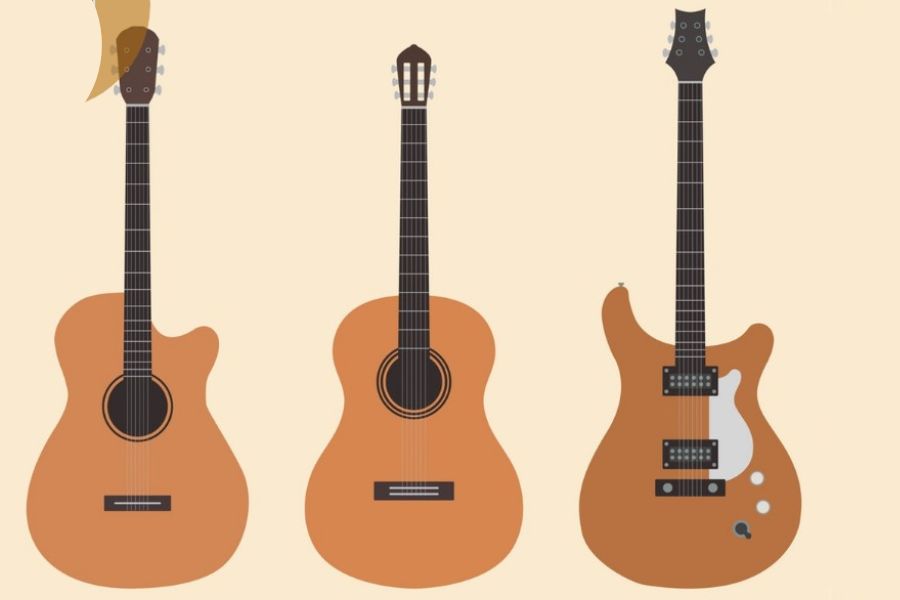
Both types use rosewood, ebony, or maple for the fretboard and mahogany or similar woods for the neck. A famous guitar, the Gibson J-45, has a mahogany neck and feels awesome.
Physical Differences
Acoustic: The early 20th-century dreadnought body type is particularly popular for its rich sound. Due of its loud, deep tone, the dreadnought is a benchmark for many musical styles.
Acoustic-Electric: Usually the same size and form as its acoustic counterpart, but may have cutaway designs for you to reach higher frets easier. Fender’s FA-135CE concert-style body with Venetian cutaway allows soloing at higher frets.
Acoustic electric guitars usually weigh 200-300 grammes (0.44-0.66 pounds) more than acoustic ones due to electronics. Compared to a typical acoustic guitar, they are more expensive and may sound different unplugged due to the pickup mechanism.
How Does An Acoustic Electric Guitar Work?
Acoustic-electric guitars are cool because they can be both regular acoustic guitars and special electric ones. When you don’t plug them in, they play just like your regular acoustic guitars. The strings vibrate and make sounds that get louder inside the guitar’s body.
But when you plug them in, they turn into something more. They have special bits like pickups and preamps that make them sound great through speakers.
Pickups
First up, pickups. These are the device that turns your acoustic strums into electric signals.
- Piezo Pickups: These sit right under the strings at the bridge. They keep your guitar sounding clear and true, just like when it’s unplugged. They also do a great job of blocking out those annoying feedback sounds when you turn the level up.
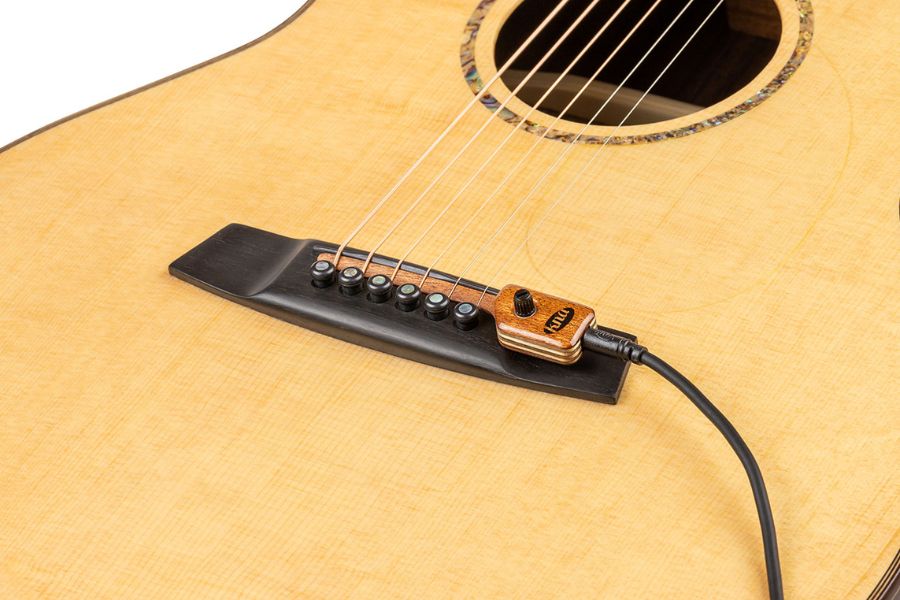
- Magnetic Pickups: These work like the magnets in an electric guitar, picking up the sounds of your strings. They mix electric and acoustic sounds to give your guitar a warm, full sound that’s a bit like listening to a record. Though they sound great, they’re not as good at capturing the acoustic vibe as piezo mics.
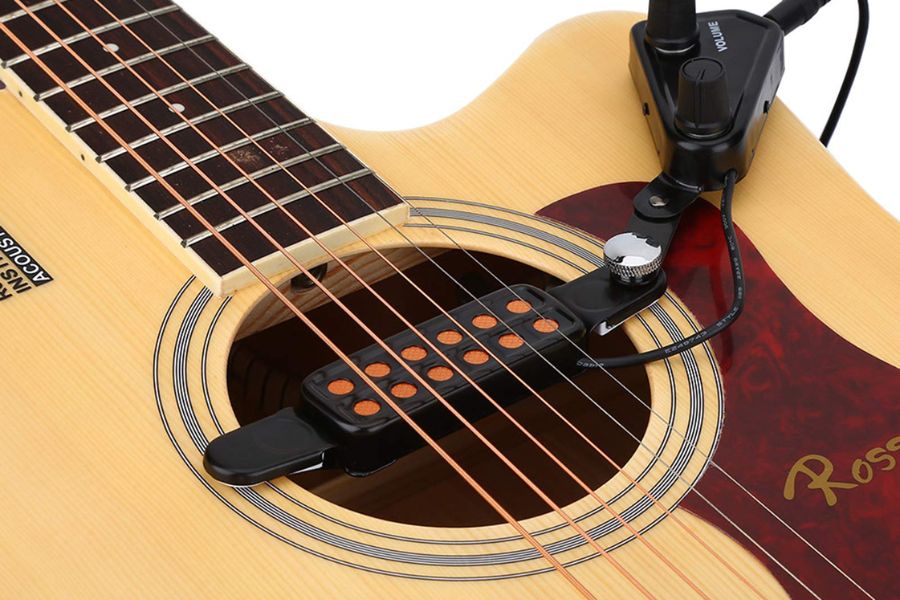
- Microphone Pickups: It’s like having little microphones inside your guitar. They pick up everything, so your guitar sounds just like it does when it’s played naturally. But watch out in loud places—they can also pick up sounds you don’t want to hear.
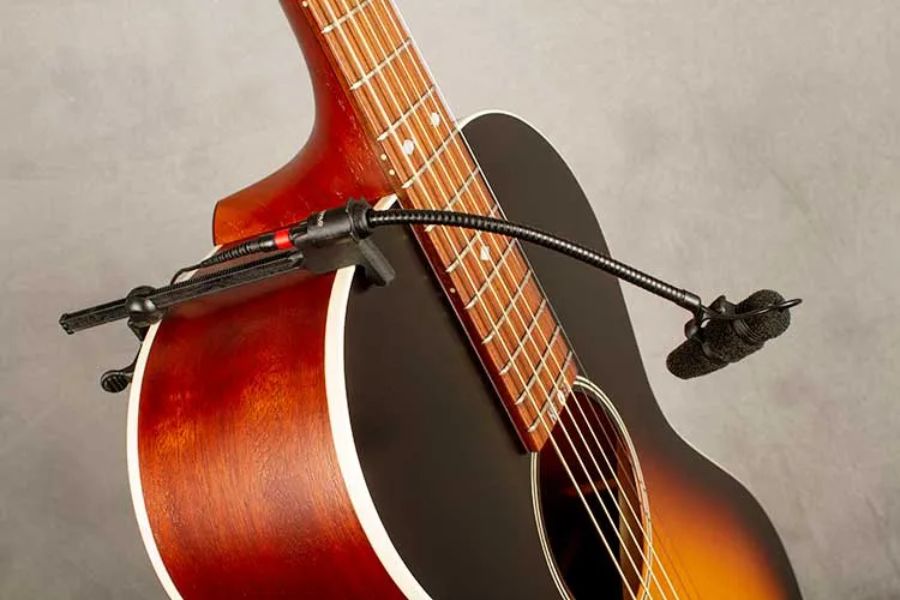
Preamps: Boosting and Shaping Your Sound
After the pickup does its job, the preamp boosts the signal from your guitar and lets you tweak the sound before it goes out.
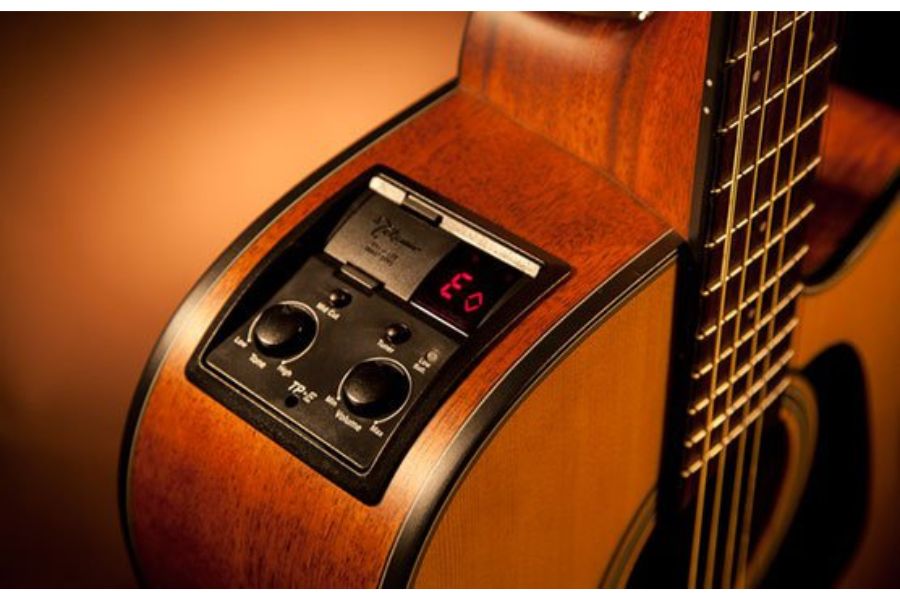
- EQ and Tone Shaping: Change the sound of your guitar to fit the song or the place you’re playing in with EQ and Tone Shaping. Do you want it loud or bright? They are under your power.
- Volume and Tuners: You don’t need any other tools to keep your guitar in tune or change the volume. The volume and tuners are very useful.
- Avoiding Feedback: Preamps are smartly made to get rid of that annoying feedback noise when you play loud
Is An Acoustic-Electric Worth It?
Yes. It’s totally worth it. Acoustic-electric guitars are super handy. They let you play loud or quiet, indoors or out. They offer the best of both worlds: the natural sound of an acoustic (the natural vibration of the wooden body) and the versatility of an electric when plugged in.
What is great about the electric guitar lies in its ability to be manipulated with effects. You can add chorus for a lush soundscape, wah-wah for a funky groove, or distortion for a powerful rock riff.
The cool things about it that aren’t about an acoustic guitar are:
- They have special parts inside that let you plug them into speakers. This is awesome for playing in front of people. You don’t need a mic to be heard.
- You can plug them straight into a computer to record your music. It’s super easy and you don’t need a big mic setup.
- They have knobs that let you change how your guitar sounds. You can make it bassy or bright to fit. Regular acoustics don’t have this.
- Sometimes, guitars make a screechy noise when they’re too loud. Acoustic-electrics have smart tricks to stop this, so your guitar sounds great all the time.
Among its many advantages over an electric guitar are:
- Electric guitars can’t sound like a real acoustic guitar. But acoustic-electrics can.
- You can play them without plugging in for a classic sound. Or plug them in and use guitar effects for something different. You get two guitars in one!
- You don’t always need an amp to hear them. This is great for when you just want to play quietly or take your guitar somewhere without electricity.
- Like electric guitars, you can hook them up to effects pedals. This lets you get creative with how your guitar sounds.
This is a fun fact: Ed Sheeran loves small Martin acoustic-electrics for their easy-to-carry size and built-in tech for big shows.
Do Acoustic-Electric Guitars Sound As Good As Acoustic?

The fact that you can plug in an acoustic-electric guitar makes it cool. But they don’t sound as clear as the normal acoustic ones we’re used to, when they are in the same playing condition. Even so, they’re great instruments on their own.
The way most acoustic guitars make sound is by vibrating, like a big speaker. But the sound changes a little when you add electric parts. It might not be as clear or strong.
Putting weight on those electric parts changes how the guitar sounds and feels, too. A heavier guitar might not be able to move around as easily, which could make the sound weaker or less full.
In order to save money or make room for electric parts, some guitars use laminates or man-made wood. Solid wood has that rich, warm sound that we all love. Laminates are strong, but they don’t sound as good. You might not feel the music as warm or loud.
Conclusion
Talking about guitars, I really like acoustic-electric ones. I’ve played them a lot at my friend’s house. They’re cool because they can be quiet or loud, depending on what you want.
So if you’re looking for a guitar that does both, try an acoustic-electric. They’re great for playing music anywhere, from your room to a big stage.









